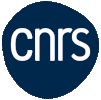Seminar: revisited aspects of spintronics: coupling and tunneling magnetoresistance, electric field control of anisotropy (August 23rd, 2018)

On August 31, we have the pleasure to welcome Coriolan Tiusan prof. at Univ. Cluj-Napoca, ROMANIA and Senior Researcher at Institute Jean-Lamour, Nancy. He will give us a seminar which will take place at SPINTEC 434A at 9:30. Revisited aspects of spintronics: coupling and tunneling magnetoresistance, electric field control of anisotropy The presentation will cover […]
Read moreNonlinear properties of pure spin conductors (June 21st, 2018)

N. Thiery, A. Draveny, V. V. Naletov, L. Vila, J. P. Attané, C. Beigné, G. de Loubens, M. Viret, N. Beaulieu, J. Ben Youssef, V. E. Demidov, S. O. Demokritov, A. N. Slavin, V. S. Tiberkevich, A. Anane, P. Bortolotti, V. Cros, and O. Klein, Phys. Rev. B 97, 060409 (2018). N. Thiery, V. V. […]
Read moreDetection of Short-Waved Spin Waves in Individual Microscopic Spin-Wave Waveguides Using the Inverse Spin Hall Effect (June 21st, 2018)

T. Brächer, M. Fabre, T. Meyer, T. Fischer, S. Auffret, O. Boulle, U. Ebels, P. Pirro, G. Gaudin, Nano Lett. 17, 7234 (2017) Detection of Short-Waved Spin Waves in Individual Microscopic Spin-Wave Waveguides Using the Inverse Spin Hall Effect We report on the wave-vector independent detection of short-waved spin waves with wavelengths down to 150 nm […]
Read moreSeminar: Towards organic spintronics: embedded many-body perturbation approach for metal-molecule spinterface (June 12th, 2018)

Monday, June 25th, 11 a.m, room 434A “Towards organic spintronics: embedded many-body perturbation approach for metal-molecule spinterface” by Jing Li, condensed matter theory group, Neel Institute, Grenoble Abstract Organic spintronics is a young and rising research field targeting at realizing spintronic devices by using organic material benefiting from its long spin lifetime. Recent experiments show […]
Read moreBest poster award of EEATS (June 08th, 2018)

In the framework of an internal collaborative project between CEA-LETI and CEA/CNRS/UGA-SPINTEC Lab, Rana Alhalabi proposed a new Look Up Table (LUT) architecture, which is one of the elementary cell of FPGAs (Field Programmable Grid Array). This innovation offers a 55% sense delay reduction, 47% number of MTJ reduction, 46% power-delay product reduction and a […]
Read moreSpin Hall and Spin Swapping Torques in Diffusive Ferromagnets (May 30th, 2018)

A complete set of the generalized drift-diffusion equations for a coupled charge and spin dynamics in ferromagnets in the presence of extrinsic spin-orbit coupling is derived from the quantum kinetic approach, covering major transport phenomena, such as the spin and anomalous Hall effects, spin swapping, spin precession, and relaxation processes. It is argued that the […]
Read more
SPINTEC offers a theoretical post-doctoral position in finite element modeling for Spintronics. The objective of our project is to combine key ingredients for modern Spintronics and SpinOrbitronics modeling within the original finite element based multi-physics software. The final goal is to make this software and its documentation accessible to a large community via the dedicated […]
Read moreChapter — Magnetic nanowires and nanotubes (April 14th, 2018)

Michal Stano, Olivier Fruchart, Magnetic nanowires and nanotubes, pp.155-267, in Handbook of Magnetism and Magnetic Materials 27, E. Brück Ed (2018). DOI: 10.1016/bs.hmm.2018.08.002 We propose a review of the current knowledge about the synthesis, magnetic properties and applications of magnetic cylindrical nanowires and nanotubes. By nano we consider diameters reasonably smaller than a micrometer. At […]
Read more
The recent discovery of nanometer-size whirling magnetic structures named magnetic skyrmions has opened a new path to manipulate magnetization at the nanoscale [1,2]. Magnetic skyrmions are characterized by a chiral and topologically non-trivial spin structure, i.e their magnetization texture cannot be continuously transformed into the uniform magnetic state without causing a singularity (see Fig.1). Skyrmions […]
Read moreSeminar : Spin Transport in Metallic Antiferromagnets IrMn (April 10th, 2018)

On April 23, we have the pleasure to welcome Yan Wen from King Abdullah University of Science and Technology (KAUST), Saudi Arabia. He makes actually his PHD supervised by Xixiang Zhang in collaboration with Aurélien Manchon. He will give us a seminar which will take place at SPINTEC 434A at 14:00. Spin Transport in Metallic […]
Read more



